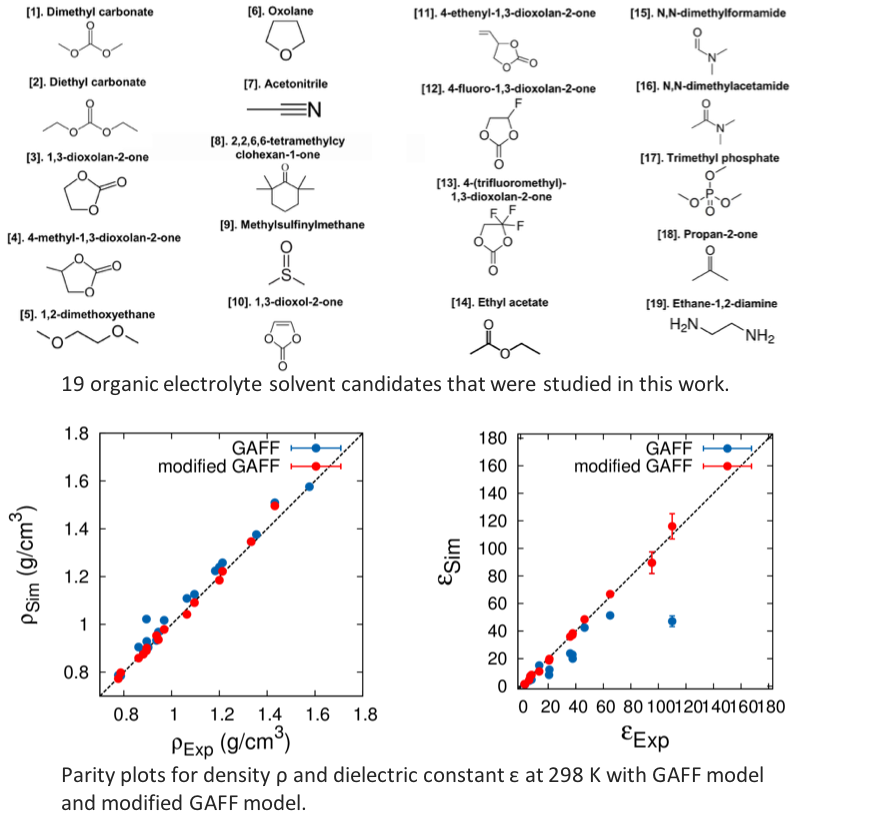
Scientific Achievement
Two efficient optimization methods to develop better parameters for simulating battery electrolytes are described. These new parameters enable one to obtain better agreement with experimental values for key properties such as dielectric constant.
Significance and Impact
Electrolyte choices influence the battery charging behavior. Being able to accurately predict battery-related properties can further assist choosing electrolytes from a huge list of candidates.
Research Details
- The performance of the standard “GAFF” force field for determining battery-related properties are evaluated by calculating density, dielectric constant, viscosity, and enthalpy of vaporization.
- Two different optimization approaches were taken to generate new parameters: 1. partial charges q and the Lennard-Jones energy parameters ϵ were scaled to optimize density and dielectric constant; 2. partial charges q and the Lennard-Jones atomic size parameters s were scaled to match density and dielectric constant.

